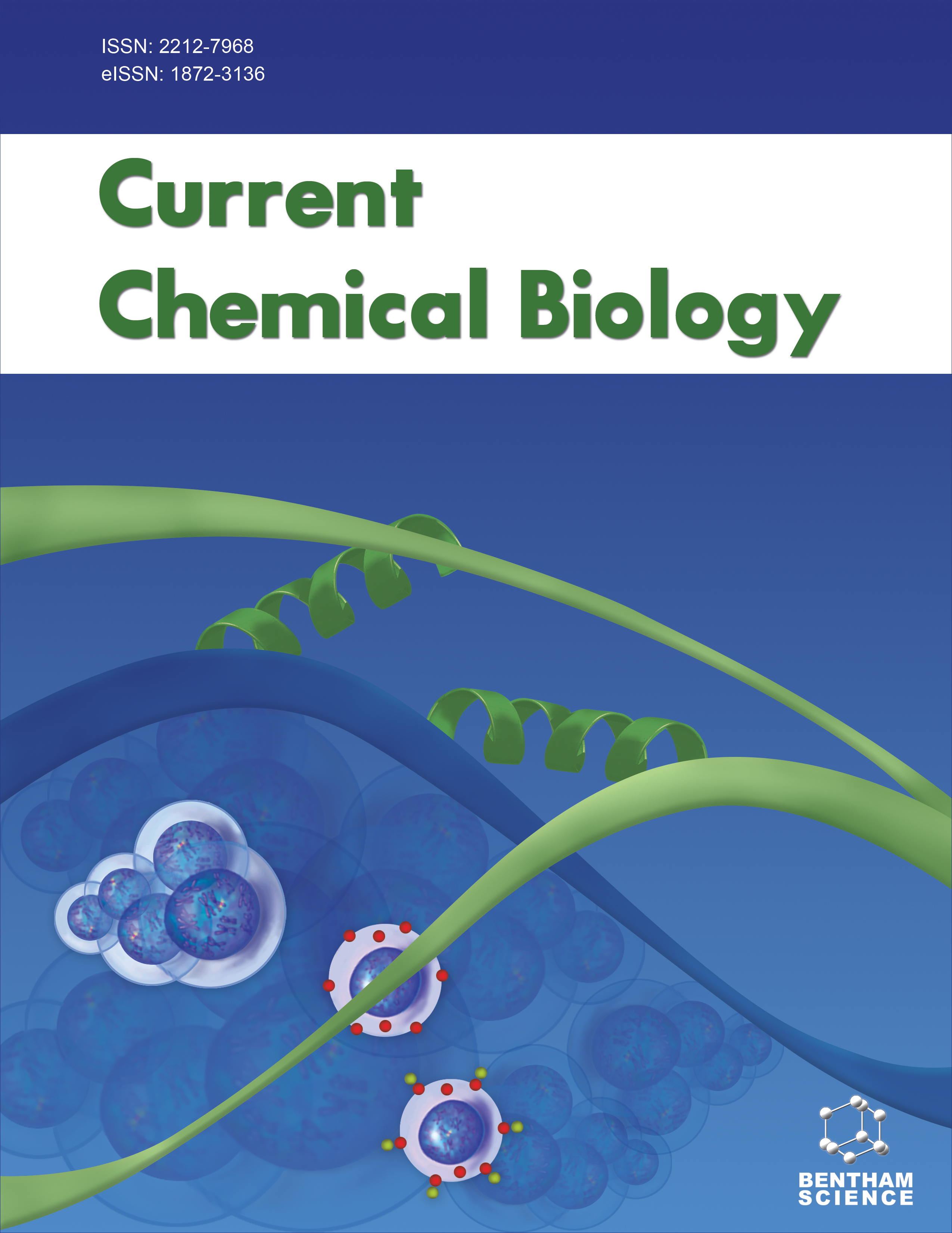- Home
- A-Z Publications
- Current Chemical Biology
- Previous Issues
- Volume 5, Issue 3, 2011
Current Chemical Biology - Volume 5, Issue 3, 2011
Volume 5, Issue 3, 2011
-
-
Editorial [Hot Topic: The Extrathyroidal Functions of Iodine (Guest Editor: Dra. Carmen Aceves)]
More LessMost investigations of iodine metabolism in humans and animals have focused on its role in thyroid function. Public health policies have been established to supply deficient populations with the necessary amount of this element in order to eradicate the iodine deficiency diseases, primarily cretinism. However, considerable evidence indicates that iodine could also be implicated in the physiology of other organs. In humans, t Read More
-
-
-
Evolutionary Significance of Iodine
More LessThe significance of inorganic and organic forms of iodine in the evolution of plants and animals is reviewed. Iodine is one of the most electron-rich atoms in the diet of marine and terrestrial organisms, and it enters cells via iodide transporters. Iodide, which acts as a primitive electron donor through peroxidase enzymes, has an ancestral antioxidant function in all iodide-concentrating cells from primitive marine algae to more Read More
-
-
-
Thyroid: Iodine Beyond the Thyronines
More LessAlthough thyroid gland function is mainly under the control of pituitary TSH, other factors may also play a role in this process. Iodine is not used only by the thyroid to synthesize thyroid hormones but also directly influences a number of parameters such as thyroid proliferation and function. Thyroid autoregulation has been related to intraglandular content of an unknown putative iodocompound. The thyroid is capable of prod Read More
-
-
-
Antiproliferative Effects of Molecular Iodine in Cancers
More LessAuthors: Pompilio Elio Torremante and Harald RosnerIodine is a scarce element in soil that is essential for human beings. It constitutes the basis of thyroid hormones, which are important for mammalian metabolism and development and are indispensable for fetal brain development. Iodine deficiency causes multiple disorders and is still the major cause of endemic cretinism. Comparison of different national cancer statistics led to the supposition that there might be an in Read More
-
-
-
Iodine in Mammary and Prostate Pathologies
More LessAuthors: Brenda Anguiano and Carmen AcevesA robust body of information supports the notion that moderately high concentrations of iodine may reduce pathologies in several tissues that concentrate iodine. This paper reviews evidence showing iodine to be an antioxidant and apoptotic agent that may contribute to the differentiation of normal mammary and prostate glands. In animal and human studies, molecular iodine (I2) supplements suppress the development a Read More
-
-
-
The Phosphobase Methylation Pathway in Caernorhabditis elegans: A New Route to Phospholipids in Animals
More LessAuthors: Soon Goo Lee and Joseph M. JezParasitic nematodes are a major cause of human health problems with an estimated 1 billion people infected worldwide by these organisms. Identifying biochemical targets that differ between the parasite and host species is essential for finding effective new anti-parasitic molecules. The free-living nematode Caenorhabditis elegans is a powerful model system for experiments in genetics and developmental biology needed Read More
-
-
-
Effects of Ox Bile Extract on the Phospholipids and Fatty Acids Membrane Composition of Salmonella enterica Serovar Typhimurium seqA Mutant Strain
More LessAuthors: Aloui Amine, Mihoub Mouadh, Kouass Sahbani Saloua, El May Alya and Landoulsi AhmedWe examined the effect of bile on the phospholipids (PL) and the membrane fatty acid (FA) composition in Salmonella enterica serovar Typhimurium (S.Typhimurium) wild type (WT) and seqA mutant strains. Phosphatidylglycerol (PtdGro), phosphatidylethanolamine (PtdEtn) and Cardiolipin (Ptd2Gro) are the major PL present in all the strains. The ox bile stress highly affected the PL contents of the seqA mutant wit Read More
-
-
-
Free Radicals in Diseases and Potential Role of Phytoconstituents-A Cause with Emerging Importance
More LessAuthors: Sukhes Mukherjee and J. B. GogoiFree radicals and oxidants play a dual role as both toxic and beneficial compounds, which in low/moderate concentrations are involved in normal physiological functions but excess production of free radicals or decrease in antioxidant level leads to oxidant stress. Free radicals are produced either from normal cell metabolisms in situ or from different external sources (pollution, cigarette smoke, radiation, medication etc). Wh Read More
-
-
-
Attenuation of Hydroxyl Radical Formation by Extracted Constituent of Moringa oleifera Lam
More LessAuthors: Suaib Luqman and Ritesh KumarBackground and Aim: Moringa, an exceptionally nutritious food plant distributed in the tropical and subtropical regions of the world, is increasingly being used for nutritional supplementation along with a variety of medicinal uses. Being rich in nutrients, various parts of the plant such as the bark, root, fruit (pod), flower, leaves, seed and gum are widely used by traditional healers, nutritionists, and doctors in a variety of illnesses. T Read More
-
Volumes & issues
Most Read This Month
Article
content/journals/ccb
Journal
10
5
false
en


